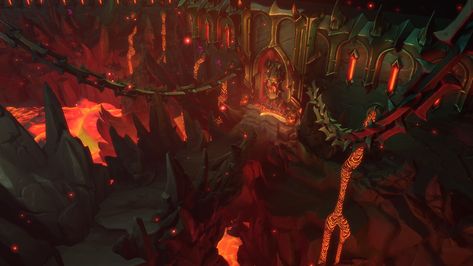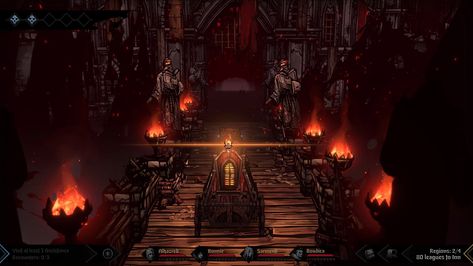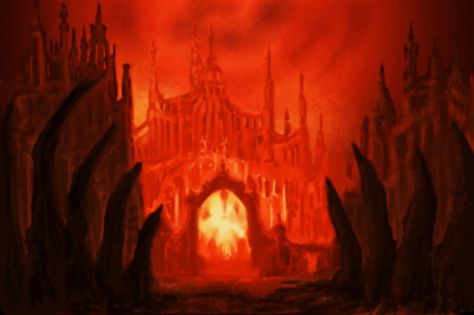Before having a talk with the game director from hell 110 we are all familiar with the fact that the world of recreation improvement is often visible as a creative area where dreams come to life. However, there’s another facet to this international that not many speak of: the gruelling and frequently overwhelming obligations that include being a recreation director. The recognition keyword these days is “Game director from hell 110,” it sheds light on the acute demanding situations faced by recreation administrators tasked with overseeing big-scale sports projects. Let’s dive into the arena of game improvement and explore what it is to be the “Game Director from Hell 110.”
What is the Role of a Game Director?
Before delving into the horrors faced by the “game director from hell 110,” it’s crucial to understand what a recreation director does. A recreation director is answerable for the creative vision of a recreation, guiding the development crew in every aspect of production. This includes everything from the storyline and gameplay mechanics to the creative layout and basic person experience.
The sports director’s role includes:
- Handling large groups.
- Ensuring cut-off dates are met.
- Troubleshooting any problems that arise during development.
It calls for both creativity and management, with the added pressure of pleasant stakeholders, traders, and, of course, the players.
The Hellish Challenges of a Game Director
For the “game director from hell 110,” the demanding situations seem never-finishing. Game improvement is notoriously unpredictable, and a director needs to frequently paint under excessive pressure, tight cut-off dates, and regular revision requests from all facets. Here are a number of the primary challenges confronted by way of a recreation director in these days’ aggressive marketplace:
The Weight of Creative Control
Game administrators are anticipated to have a clear vision of the game from the outset. However, preserving that vision may be one of the most disturbing components of the process. Developers, designers, and writers may additionally have creative ideas, which could now and then warfare with the director’s original concept. Ensuring that everybody is on the same page while incorporating new ideas can result in creative exhaustion.
Tight Deadlines
In sports development, closing dates are a regular source of strain. Companies invest tens of millions of greenbacks into the development, thus assuming their sport will launch on time. The “game director from hell 110” frequently has to push the team to their limits, ensuring milestones are met, frequently on the value of labour-existence balance. Delays can motivate monetary losses and even jeopardise the whole mission.
Technical Hurdles
No matter how proficient a team is, technical issues are inevitable in game development. Bugs, performance troubles, and hardware barriers can all derail a recreation’s progress. For the recreation director, every technical problem is a capability disaster that should be constant immediately. This requires a deep expertise in each recreation design’s innovative and technical aspects.
Player Expectations
In the modern-day gaming industry, gamers are more incredibly annoying than ever. They assume super photos, clean gameplay, and immersive stories. The “game director from hell 110” faces the additional task of keeping up with participant expectations, which alternate unexpectedly as new games and technology emerge. Failure to meet those expectations can bring about poor opinions, which could smash the game’s recognition earlier than it even has a chance to succeed.
Handling Crunch Culture
The “game director from hell 110” is regularly associated with the notorious “crunch lifestyle” in game improvement. Crunch refers to the intense work that often comes toward the end of a project’s improvement cycle, in which developers are required to work lengthy hours, on occasion 60-eight hours every week, to satisfy cut-off dates. While a crunch can also result in quick-time period gains, it comes at the cost of employee morale and well-being.
Communication Breakdowns
A recreation director must coordinate with two departments: art, programming, design, marketing, and more. Miscommunication can result in setbacks that price money and time. Effective verbal exchange is critical to fending off high-priced mistakes, but matters can quickly go awry when a couple of teams are running concurrently.
Budget Constraints
Budget limitations often preclude creativity, even with millions of dollars on the line. Directors have to make difficult choices about where to allocate resources. Should the group invest extra in individual design or attention to gameplay mechanics? These selections can make or destroy a game, mainly when the budget is tight.

How the Game Director From Hell 110 Survives
The “game director from hell 110” doesn’t survive using hazards. Navigating those demanding situations takes a unique aggregate of competencies, intellectual resilience, and enjoyment. Here’s how those directors manipulate to live afloat despite the overwhelming strain:
Clear Communication
To manage large groups effectively, the director must ensure everyone is on the same page. Frequent meetings, development updates, and clean documentation help avoid confusion.
Managing Expectations
Setting sensible goals and managing the expectations of both stakeholders and gamers is critical. A successful recreation director knows that not every idea is possible, and focusing on delivering a refined final product is vital.
Delegation
A critical capability of a fantastic recreation director is delegating responsibilities to crew members. Trusting your team and permitting them to execute their roles is vital for fending off burnout.
Handling Feedback Gracefully
Receiving comments is part of the task. Whether from the group, players, or executives, the recreation director must take criticism seriously and make necessary modifications without losing sight of the bigger picture.

Conclusion: The Trials of the Game Director From Hell 110
The “game director from hell 110” function isn’t for the faint-hearted. It involves handling demanding situations ranging from tight closing dates to technical troubles and player expectations. While the pressures can be overwhelming, folks who achieve this role are frequently hailed as visionaries who carry beloved video games to life. However, it’s vital to recognize the human price behind these creations and attempt to create a more sustainable work environment in sports development.
FAQs
What does a recreation director do?
A sports director oversees all aspects of game improvement, from the storyline to technical factors, ensuring that the innovative vision is maintained throughout the game.
What are the biggest challenges confronted by using sports administrators?
Game administrators face tight deadlines, technical troubles, financial constraints, and the desire to satisfy high participant expectations, among other challenges.
What is the crunch subculture in sports improvement?
Crunch culture refers to the intense running hours that development teams regularly put in closer to the end of an undertaking to fulfil time limits.
How do sports administrators manipulate player expectancies?
Game directors keep up with enterprise tendencies and player feedback, ensuring stable innovation and first-class quality to satisfy players’ expectations.
Can a recreation director prevent burnout?
Yes, recreation administrators can mitigate burnout by delegating obligations, setting sensible goals, and maintaining transparent verbal exchanges.

